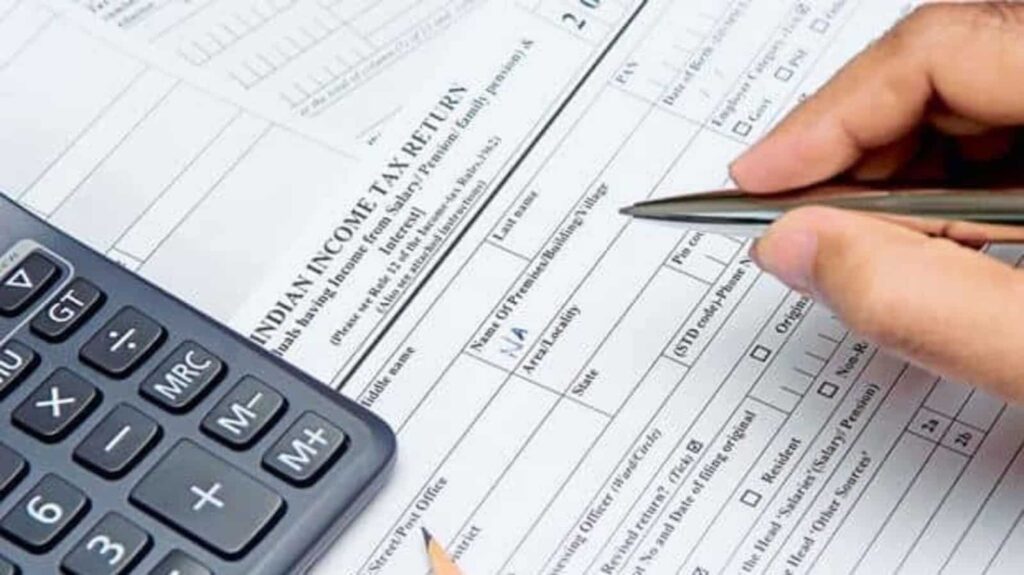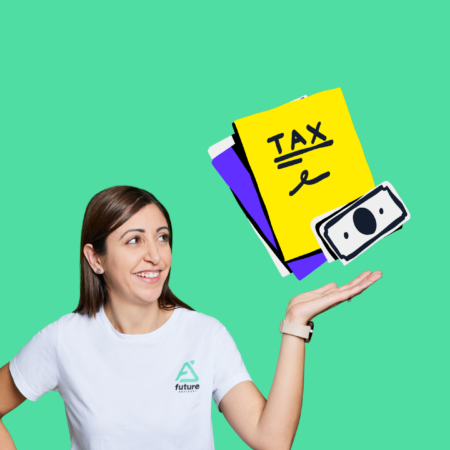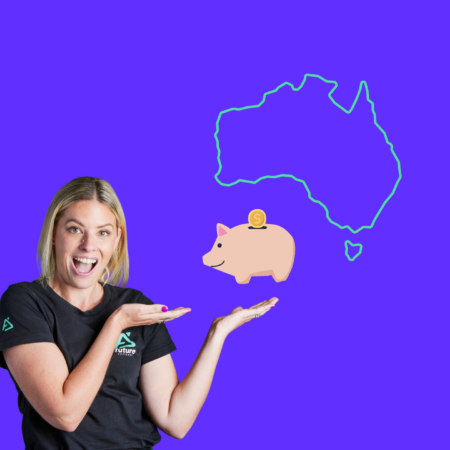How Do I Organise an ATO Payment Plan?
Key highlights:
- Flexible Repayment to Ease Financial Stress: ATO payment plans allow taxpayers to repay their tax debt over time in manageable instalments, helping to avoid large upfront payments and reducing financial pressure.
- Eligibility and Documentation Requirements: Anyone with an ATO debt can apply, but those with larger debts or past defaults may need to provide detailed financial information, including income, expenses, and assets.
- Maintaining Good Financial Standing: Regular payments help avoid additional penalties and protect credit ratings while monitoring progress and staying in contact with the ATO ensures the plan remains effective.
Payment plans are a very common way of meeting tax obligations. All kinds of situations can arise between BAS payments or end of year tax bills that make it hard to hard over thousands in one hit. Here’s everything you need to know about ATO payment plans…

What is an ATO payment plan?
An ATO payment plan is a financial assistance arrangement allowing repayment of any existing debt with the ATO over a period of time in instalments rather than upfront in one hit. A payment plan has a set amount that is to be paid weekly, fortnightly or monthly.
Organising an ATO payment plan is essential for maintaining your financial health. By setting up a payment plan, you can avoid penalties and interest charges that accrue on unpaid taxes. Furthermore, by opting for an ATO instalment plan, you can alleviate financial stress and avoid potential penalties and interest charges.
Who is eligible for an ATO payment plan and what is the criteria?
Anyone who has a debt with the ATO is eligible to enter a payment plan, however there are certain circumstances where they’ll request further information before approving it. For example:
- If you have a debt over $100,000
- If you’ve had payment arrangements default in the past
If either of these two scenarios are the case, the information requested by the ATO will be as per below:
- Monthly income including;
- employment
- interest
- rent
- royalties
- dividends
- Monthly expenses such as:
- transport
- groceries
- gas, electricity and water bills
- recreation and entertainment costs
- insurance (financial planning)
- financial (for example, credit cards, personal loans)
- clothing and personal care
- education and childcare
- TV, phone and internet
- minimum mortgage repayments or rent
- Total value of assets
- Bank balances
In addition, if you’re in business and those two scenarios apply you’ll need to provide the following:
- business income (over the last 3 months)
- business expenses (over the last 3 months)
- other cashflow information, such as whether
- the business is seasonal
- previous activity statements are a reflection of ongoing statements
- creditors and debtors
Benefits of ATO Payment Plans
Do ATO Payment Plans Help Relieve Financial Pressure?
Absolutely. ATO payment plans are designed to ease financial burdens by allowing you to pay off your tax debts in manageable instalments. This structure can significantly reduce stress and help you regain control over your finances.
What Incentives Are Available When Participating in ATO Payment Plans?
Participating in an ATO payment plan can also come with incentives, such as waiving certain penalties and interest charges if you adhere to your payment schedule. This can save you money in the long run and provide added motivation to stick to the plan.
Impact on Personal and Business Financial Situations
By organising an ATO payment plan, you not only avoid penalties but also protect your credit rating. This proactive approach helps maintain your financial reputation, allowing for smoother business operations and personal finance management.
7 Steps to Organise an ATO Payment Plan in Australia
1. Understanding Your Tax Debt
The first step to organising an ATO payment plan is to assess your tax debt. This involves determining the exact amount you owe and understanding the underlying reasons for the debt. Be prepared for the fact that the ATO will ask you why you haven’t been able to make the payment in full and details of why the debt has been incurred.
2. Contacting the ATO
Once you’ve assessed your debt, it’s time to contact the ATO. You can do this by:
- Calling the ATO: Dial 13 11 42 to speak with a representative.
- Using Your ATO Online Account: Log in to your account to access payment plan options and tools.
- Visiting an ATO Office: Schedule an appointment to discuss your situation in person.
3. Providing Financial Information
To assess your eligibility for a payment plan, the ATO will require financial information. This typically includes:
- They will ask for your name, Tax File Number & potentially other details to confirm identity (address, DOB, financial details listed on your account)
- Have a document reference number ready (from a piece of ATO Mail)
- Income: Details of your income sources and amounts
- Expenses: Information about your regular expenses, such as rent, mortgage, and utilities
- Assets and Liabilities: A list of your assets (e.g., property, investments) and debts
- Employment Status: Your current employment situation
4. Negotiating a Payment Plan
The next step is to negotiate a payment plan with the ATO. This involves:
- Payment Frequency: Determining how often you will make payments (e.g., weekly, fortnightly, monthly)
- Payment Amount: Deciding on the amount you can afford to pay each instalment
- Upfront Payment: Discuss any upfront payments required to initiate the plan
- Interest and Penalties: Understanding the interest and penalty charges associated with your tax debt
5. Agreeing to the Terms
Once you’ve negotiated a suitable payment plan, you’ll need to agree to the terms and conditions. This typically involves:
- Written Agreement: Receiving a written agreement outlining the specific terms of the plan.
- Reviewing the Terms: Carefully review the agreement to ensure you understand all the details.
- Signing the Agreement: Signing the agreement to formalise the arrangement.
6. Making Regular Payments
To avoid penalties and maintain a good standing with the ATO, it’s crucial to make regular payments. You can make payments through various methods:
- Direct Debit: Set up a direct debit to automate payments from your bank account.
- BPAY: Use BPAY to make payments through your online banking or at your financial institution.
- Online Payments: Make payments directly through your ATO online account.
- In-Person Payments: Pay at an ATO office or authorised payment outlet.
7. Monitoring Your Progress
To ensure you stay on track with your payment plan, it’s essential to monitor your progress. This involves:
- Reviewing Your Account: Regularly check your ATO online account to track payments and balances.
- Communicating with the ATO: Staying in touch with the ATO to address any issues or changes in your financial situation.
Why pay my tax upfront when I could go on a payment plan?

It’s always best to pay upfront and on time! It eliminates the risk of general interest charges (the ATOs interest charges on unpaid debts). The General Interest Charge rate is reviewed by the ATO quarterly however is calculated on a daily compounding basis on all outstanding debts. The current rate of GIC Annual Rate is charged at 8%. Ideally, you don’t want your debt to increase further.
How do I organise an ATO payment plan?
We can assist in the negotiation of a payment plan on your behalf for a fee from $150.00 plus GST. Alternatively, you can contact the Australian Taxation Office directly using the following contact details:
- Individuals 13 25 68
- Business line (if your debt does not exceed $100,000.00) 13 72 26
- Businesses (debt exceeding $100 000) 13 11 42
Why do we charge for this service?
Because we do a lot more than click a couple of buttons. The first step when establishing the payment arrangement is to communicate with you as to affordable repayment amounts, initial deposit amount, preferred payment frequency and payment method.
The team will then review your current financial situation, collect all data required to provide to the ATO as well as forecast upcoming payment obligations to the ATO to ensure the repayments will remain affordable.
By committing to a payment arrangement that is not only affordable now but also in the future, the chance of the payment arrangement defaulting is minimised meaning that:
1. The ATO will be happy to grant you a payment arrangement in the future if required; and
2. There will not be further fees incurred due to the need to renegotiate the payment plan
Once the payment arrangement has been successfully established, we will ensure you have everything you need to commence payments including a payment plan schedule and payment slip.
A couple of other bits to know about…
- Any tax credits and refunds you receive while there is an existing ATO debt will be used to offset your tax debt. The offsetting of your tax debt does not replace the required installment payments and the ongoing repayment schedule will remain active
- General interest charge (GIC) will accrue until the debt is paid
- You can make additional voluntary payments or pay off the debt at any time
- You still need to lodge your activity statements and tax returns and pay any associated liabilities on time
- If you miss lodging on time (eg your BAS) during the payment plan, then it will default
Questions? Concerns? Need a payment plan. Find us here.
FAQ
What You Need To Do Before You Set Up a Payment Plan
Before setting up an ATO payment plan, assess your financial situation by evaluating your income and expenses to determine what you can afford to pay. Gather necessary documentation, including your recent tax return and financial statements, to provide a clear picture of your finances. Familiarise yourself with your tax obligations and the specifics of ATO payment plans by reviewing guidelines on the ATO website. Consider contacting the ATO for guidance and prepare a payment proposal outlining manageable amounts and a realistic timeline. If needed, seek professional help from financial advisors or tax agents to ensure a smooth process. Being well-prepared will help you effectively manage your tax responsibilities.
Do ATO Payment Plans Incur Interest?
Yes, ATO payment plans can incur interest, but participating in a payment plan may allow you to avoid additional penalties that would otherwise apply to unpaid tax debts. Always clarify the terms of your payment plan with the ATO.
How Can I Ensure Timely Payments?
To ensure timely payments, consider setting up direct debit to automatically deduct payments from your account. Regularly review your financial situation and adjust your budget as needed to accommodate your payment plan.
Can I Change My Payment Plan?
You can request to change your payment plan if your financial situation changes. This usually involves contacting the ATO and providing updated information about your income and expenses.
When is the Best Time to Apply for an ATO Payment Plan?
The best time to apply for an ATO payment plan is as soon as you realise you cannot meet your tax obligations. This proactive approach helps prevent complications and allows you to establish a manageable repayment schedule.
What Pitfalls Should I Avoid When Applying?
Common mistakes to avoid when applying for ATO payment plans include:
- Underestimating your ability to pay
- Failing to provide accurate documentation
- Ignoring communication from the ATO













